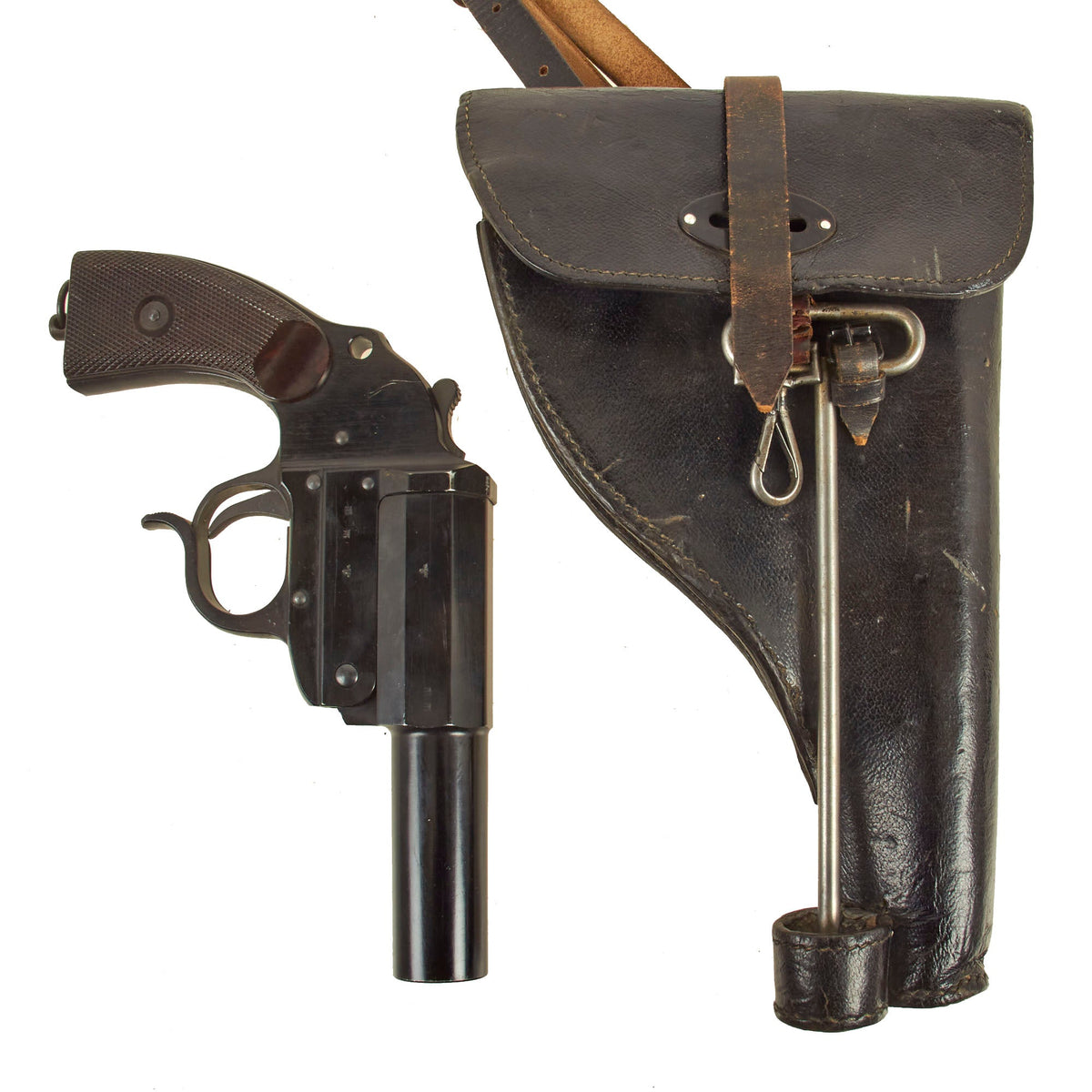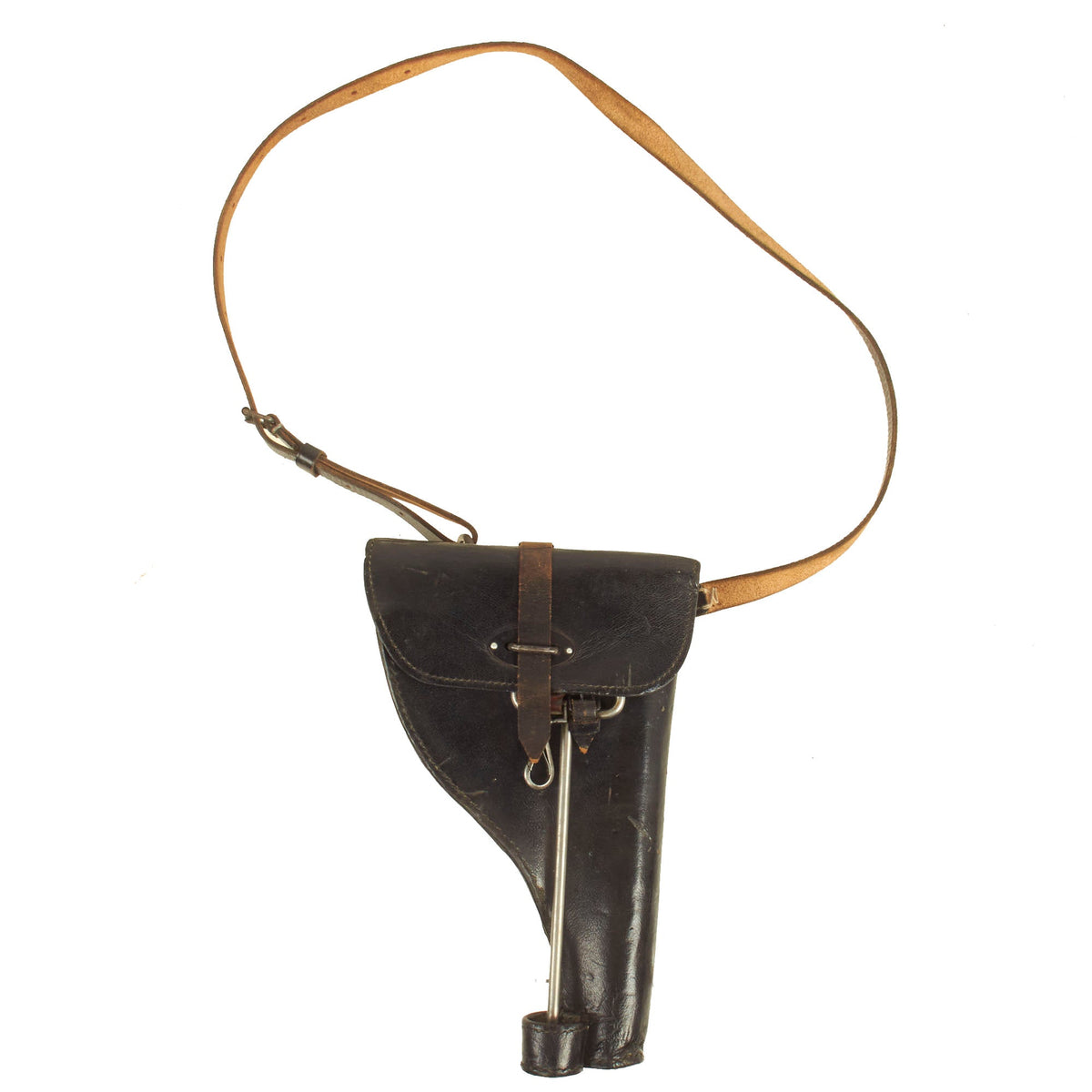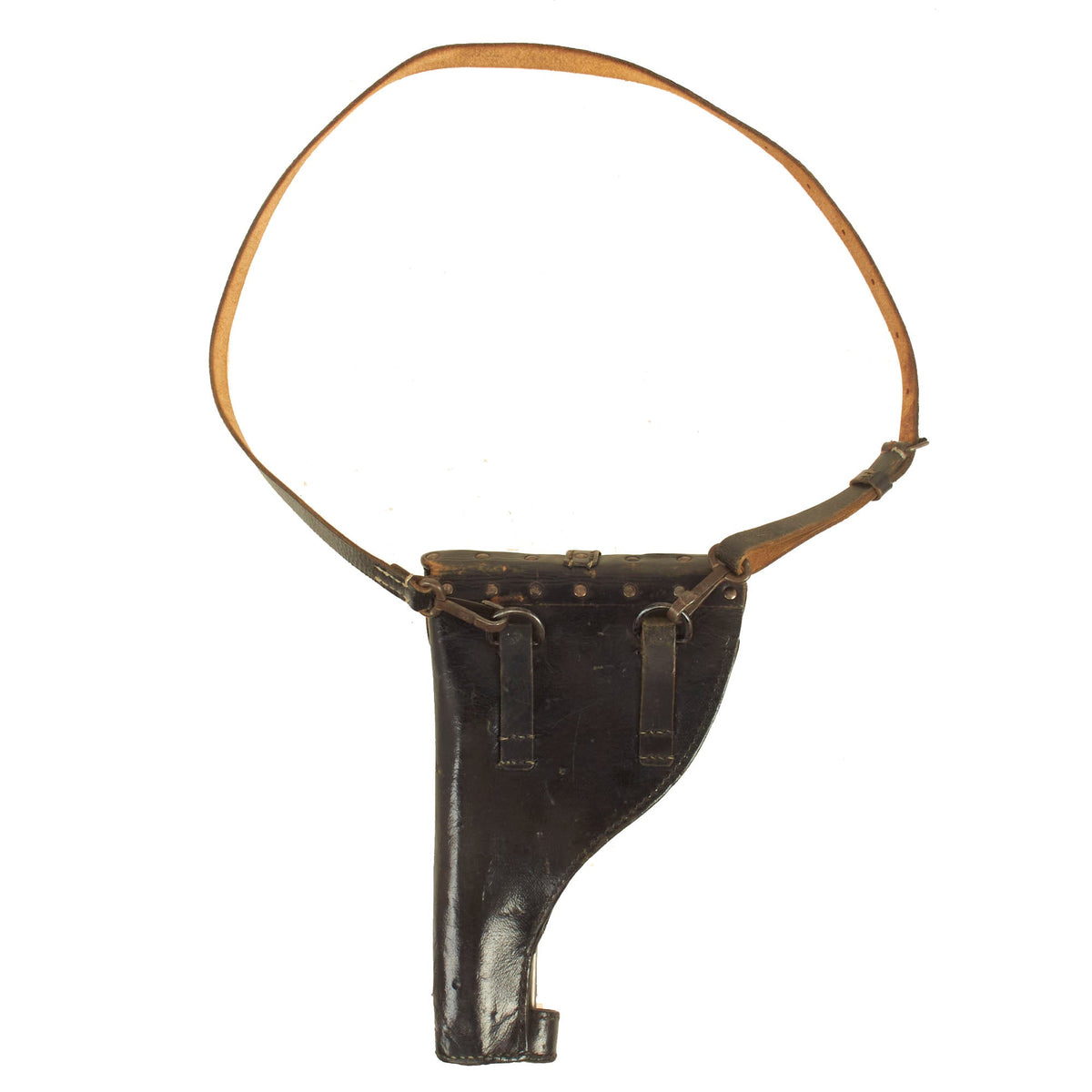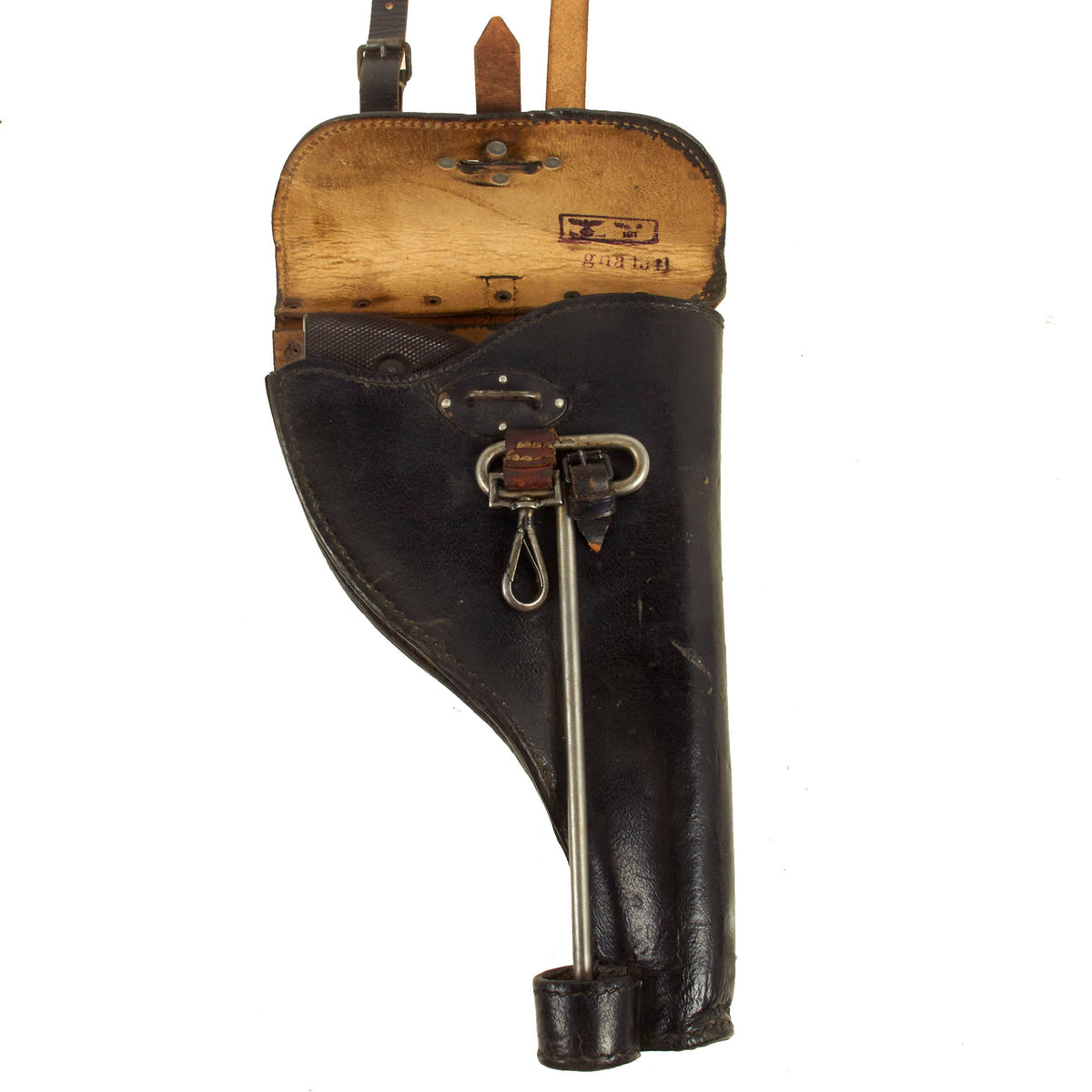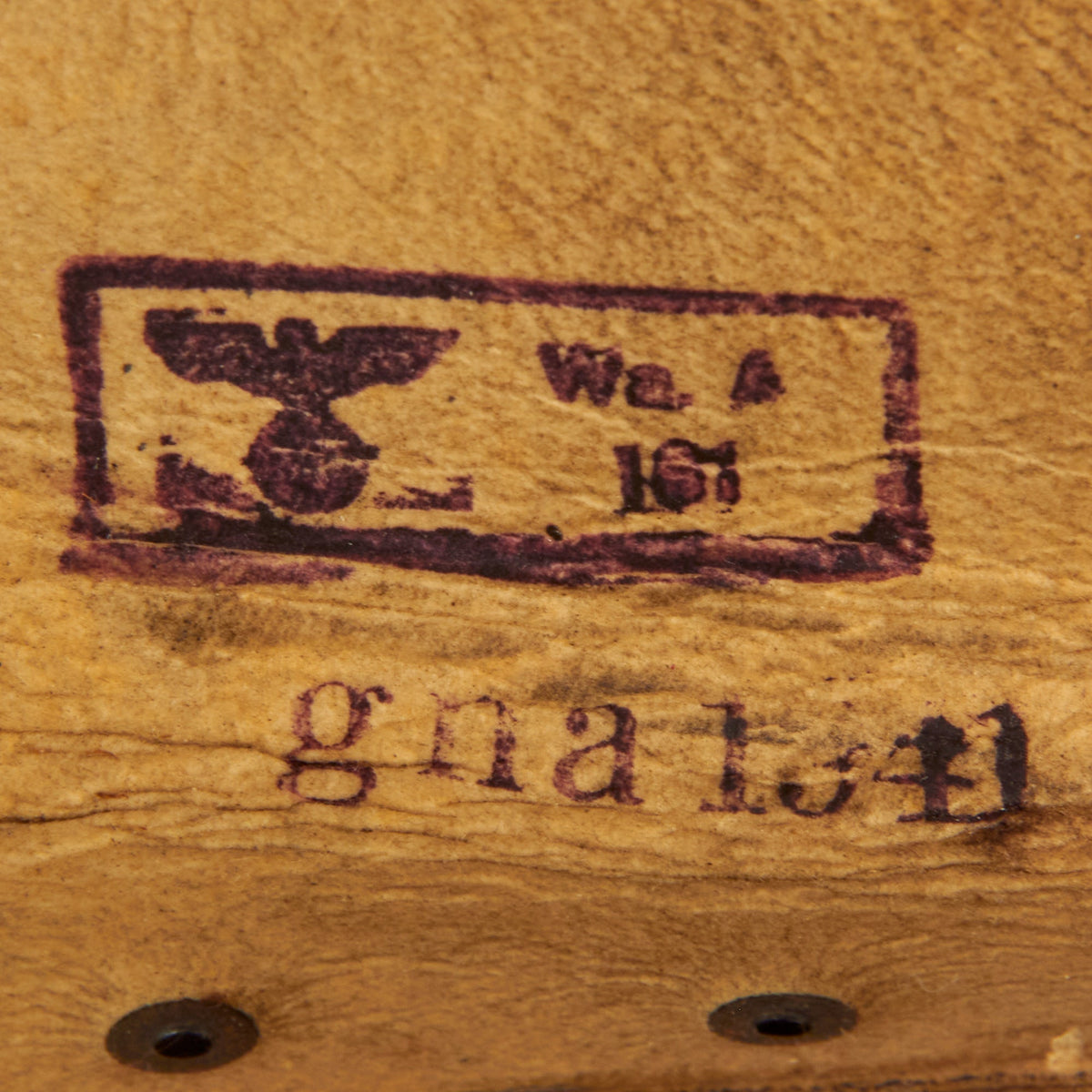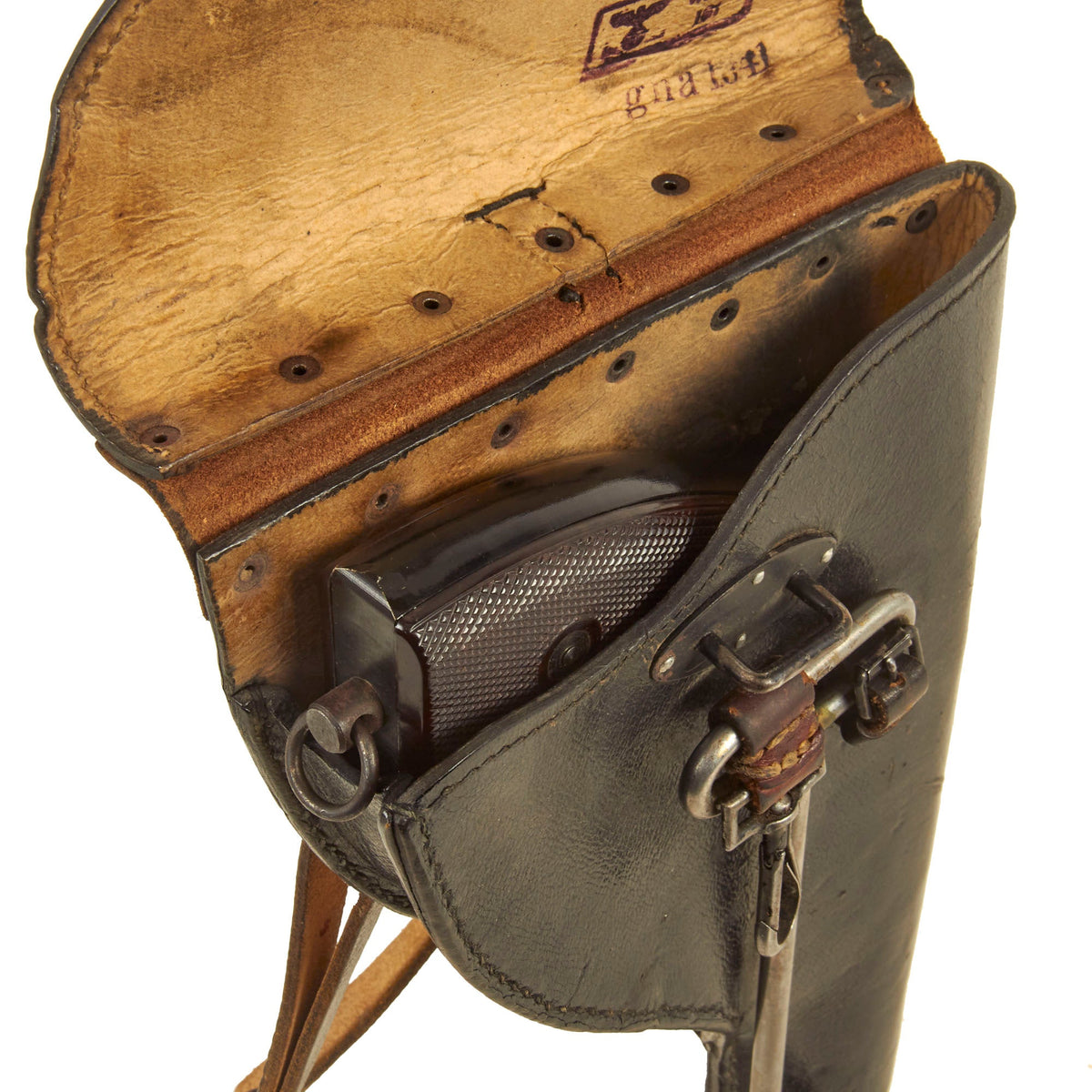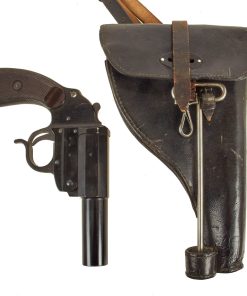Original German WWII LP 34 Signal Flare Pistol by ERMA-Erfurt with Preßstoff Holster & Cleaning Rod – dated 1943 & 1941 Original Items
$ 1.395,00 $ 348,75
Original Item: Only One Available. This is a wonderful 1943-dated example of the classic German Wehrmacht LP-34 signal flare pistol, which was designed in 1934. Unlike most of our offerings, it comes complete with an original cleaning rod and leather holster, which is dated 1941. The Leuchtpistole 34 has an aluminum alloy frame and barrel with steel moving components, uses 26.5 mm flares, and was finished in black anodized aluminum. Steel components were blued. It superseded the previous LP28, which was made of all steel, as part of a continuing evolution of Walther-designed flare pistols.
The change to the “duralumin” reduced the weight of the pistol by 0.730 kg, and also partially prevents internal corrosion due to gun powder residue. The overall machine work of the components was improved over the LP28, and the wood grips were replaced by checkered bakelite. Most importantly, the trigger guard was made significantly larger, so that the pistol could be used easily even with a gloved hand.
This example is maker marked ayf on the left side of the frame, for manufacture by the legendary ERMA-Erfurter Maschinenfabrik B. Geipel GmbH of Erfurt, a German weapons manufacturer founded in 1922 by Berthold Geipel. Prior to and during World War II it manufactured many firearms, including the Karabiner 98k, the MP40 and other submachine guns. Below this is it stamped with the manufacture date of [19]43, and it has serial number 5761labove the trigger guard and on the barrel. It is nicely Waffenamt marked on the right side of the frame and barrel, with inspector number 280, the correct inspector for ERMA.
Completely Original German WII manufacture in excellent complete condition with mid war flat-sided dark brown bakelite checkered grip panels with rounded edges. The pistol is very clean, and still has the original finish almost completely retained! There is just a bit of wear through on the edges and contact points on the anodized finish. The steel components still have their original heavy blued finish, with no rust that we can see. It still retains the original lanyard ring on the base of the grip, which is not removable as early war version were. It is retained by a spring and cotter pin on the inside of the grip.
The included holster looks to be the standard heavy black soft shell holster used throughout the war. Unlike most however, this is actually made mostly of “Preßstoff”, an imitation leather made from pressed paper. We have only seen a few of these holsters intact before, and they are generally rarely seen. The “hinge” for the lid a strip of leather that is riveted on to the flap and body, and the sides and bottom of the holster are also leather, as are the straps and buckle loops. It is in very good condition, and does not appear to have seen much use in service. The black finish is in very good condition, and there is only light cracking and/or wear. It is maker marked gna 1941 by the hinge, for manufacture by Gustav Buchmiüller of Stuttgart, a known maker of leatherware including holsters during the war. Above this is a stamped Waffenamt Wa.A 161 inspection mark.
The holster still has both of the D-rings at the top on the rear, and there is a lovely original shoulder strap still attached, with steel spring hooks. The finish on the leather is a bit worn, but it has the correct white stitching, and is really a rare find, as these were easily removable and often taken home or put to other uses.
The included cleaning rod has a steel handle, and aluminum end rammer. It has Waffenamt marking (Eagle) / WaA716 stamped into the top of the handle, a marking that we have seen before on these. It also has a spring clip attached to the handle with a small leather strap, something we rarely see, that enables the cleaning rod to be attached elsewhere if needed.
A fantastic complete set in lovely condition, with all the components still present, which we very rarely see! Ready to add to your collection and display!
Presstoff (also Preßstoff or Pressstoff) is the German-language term for a type of ersatz or artificial leather used during the first half of the 20th century. Made of specially layered and treated paper pulp, Presstoff was durable and easily adapted to be used in place of leather, which under wartime conditions was rationed. First invented in the 19th century, it gained its widest use in Germany during the Second World War.
Presstoff use included but was not limited to binoculars cases and straps, horse tack, bayonet frogs, equipment belts, cap visors etc. In short, Presstoff could be used in almost every application normally filled by leather, excepting items like footwear that were repeatedly subjected to flex wear and/or moisture. Under these conditions Presstoff tended to delaminate and lose cohesion.
Fast Shipping with Professional Packaging
Thanks to our longstanding association with UPS FedEx DHL, and other major international carriers, we are able to provide a range of shipping options. Our warehouse staff is expertly trained and will wrap your products according to our exact and precise specifications. Prior to shipping, your goods will be thoroughly examined and securely secured. We ship to thousands clients each day across multiple countries. This shows how we're dedicated to be the largest retailer on the internet. Warehouses and distribution centres can be located throughout Europe as well as the USA.
Note: Orders with more than one item will be assigned a processing date depending on the item.
Before shipping before shipping, we'll conduct a thorough inspection of the items you have ordered. Today, the majority of orders will be delivered within 48 hours. The delivery time will be between 3-7 days.
Returns
The stock is dynamic and we cannot completely manage it because multiple stakeholders are involved, including our factory and warehouse. So the actual stock may alter at any time. It's possible that you may not receive your order once the order has been made.
Our policy is valid for a period of 30 days. If you don't receive the product within 30 days, we are not able to issue a refund or an exchange.
You can only return an item if it is unused and in the same state as the day you received it. You must have the item in its original packaging.
Related products
Uncategorized
Uncategorized
Angolan Rebel 1970s era 60mm Inert Display Mortar from Angolan Civil War Original Items
Uncategorized
Uncategorized
Uncategorized
Uncategorized
Uncategorized
Uncategorized
Uncategorized
Uncategorized
Uncategorized
Uncategorized
Uncategorized
Uncategorized
Uncategorized
Uncategorized
Armoured Fighting Vehicles of the World: AFVs of World War One (Hardcover Book) New Made Items
Uncategorized
Uncategorized
